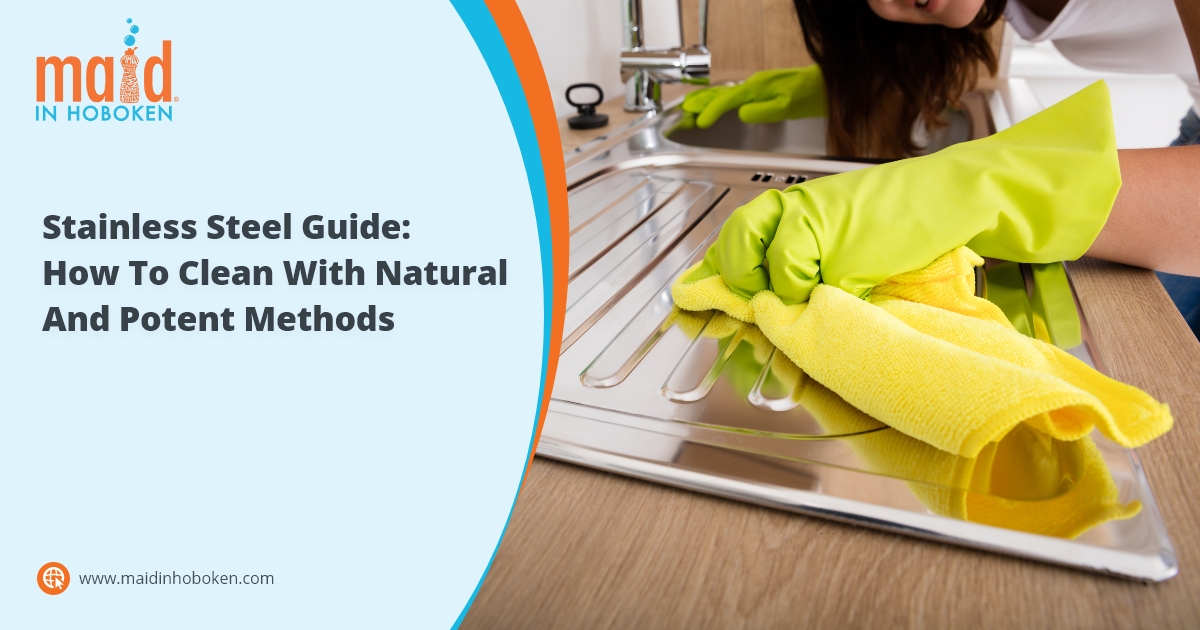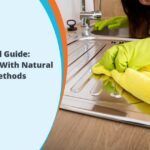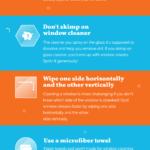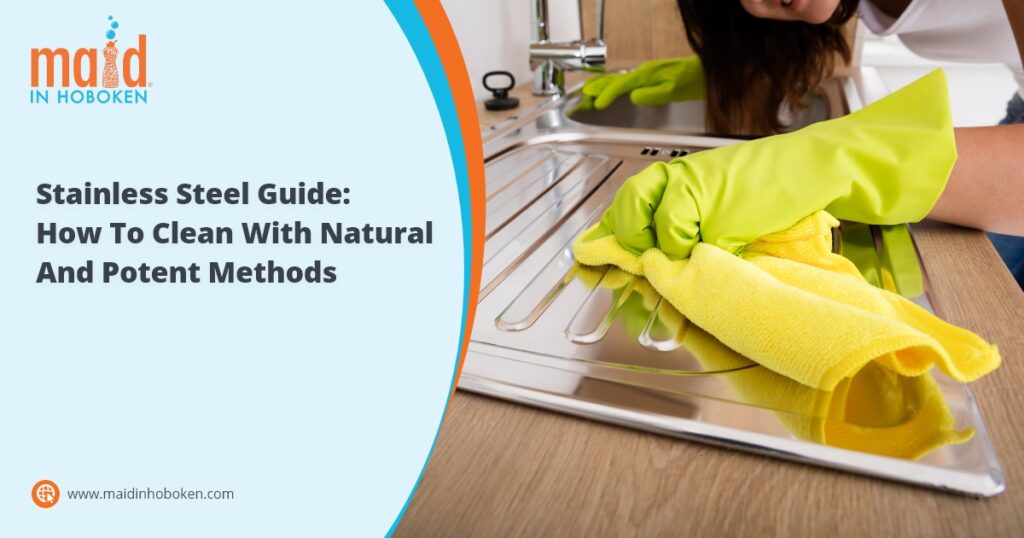
How to clean stainless steel appliances? That’s a question many homeowners in Hoboken, NJ, ask. After all, those silver surfaces look delicate!
In this blog post, you will find easy and effective ways to clean them without too much risk and effort. But first, we have to learn a thing or two about the nature of stainless steel:
Understanding stainless steel
Many homeowners in New Jersey have stainless steel appliances. It’s a trendy option! Stainless steel gives a sleek and sophisticated look to every home and also has many benefits like resistance to damage and rust.
However, sinks, fridges, and other kitchen appliances have something in common: they are touched many times! Fingerprints and other stains are very noticeable on stainless steel surfaces, and constant cleaning is the only way to get rid of them.
How to clean stainless steel appliances?
For beginners, stainless steel could be intimidating to clean. However, it will be easier once you find your ideal cleaning method.
Here are 5 essential tips:
Tip #1: Create a daily habit
Those fingerprints and water spots could worsen over time. Dust and dirt can accumulate on the surface, creating grime. Don't overthink it! Create a daily habit and clean those minor stains on the go.
Always keep a microfiber cloth close. Damp it with warm water and wipe the surface every day to keep it spotless.
Tip #2: Check the manufacturer’s manual
Not all stainless steel appliances are created equal. Each one can have a different type of finish or contain different metal concentrations. What works with your fridge will not necessarily work with the sink.
Keep your manufacturer's manual close. Read the recommendations regarding cleaning products and methods.
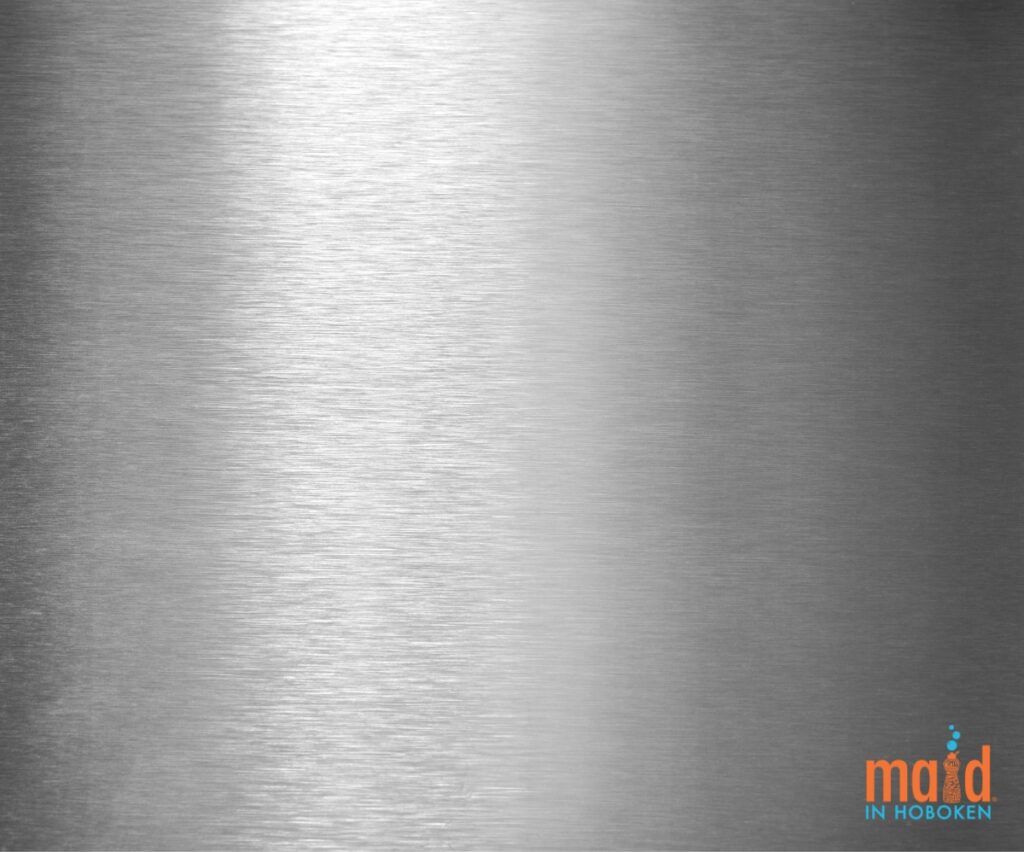
Tip #3: Follow the grain
Just like wood furniture, stainless steel appliances have a grain. If you get a closer look, you will see thin lines that cover the surface.
For effective, streak-free cleaning, try to wipe your appliance following the grain. Do a simple test to clear your doubts: wipe gently vertically and horizontally using a soft cloth. If you find resistance in one direction, then you’re not following the grain.
Tip #4: Spot-test your cleaning solution
Routine cleaning is easy. However, spot-testing is the safest way to proceed when trying a more powerful cleaning solution to eliminate greasy stains.
Apply the cleaning solution in a small and discreet section of your appliance and see how it reacts. If you like what you see, then complete the rest of the surface. Use this technique with any cleaner, either natural like vinegar or commercial like Windex.
Tip #5: Always dry afterward
Avoid those ugly water spots just by drying after cleaning. A microfiber cloth is your trusted ally for this duty. These fabrics are best because they absorb water better than others and don't leave scratches. Remember: lint-free is best.
Still, a paper towel or a soft rag can be effective too—just be careful and spot-test it!
The majority of stainless steel appliances are located in the kitchen. If you want a professional to tackle these chores for you, check our Home & Apartment Cleaning packages, including kitchen cleaning tasks.
The safest DIY cleaners and methods:
Many homeowners opt for green, DIY cleaning solutions for cleaning their stainless steel appliances. These cleaners are safer than the more potent ones like alcohol or Windex, but they are more effective as daily maintenance, erasing superficial stains.
Warm water and microfiber cloth
Try to clean your stainless steel surfaces with just a microfiber cloth and warm water. The warm water is usually enough to dissolve minor stains and fingerprints. If the results are good, there’s no need to use any other substances.
- Damp a soft cloth with warm water.
- Wipe the surface following the direction of the grain.
- Apply some elbow grease to the oily fingerprints or water spots.
- Wipe with a dry cloth, preferably a microfiber cloth.
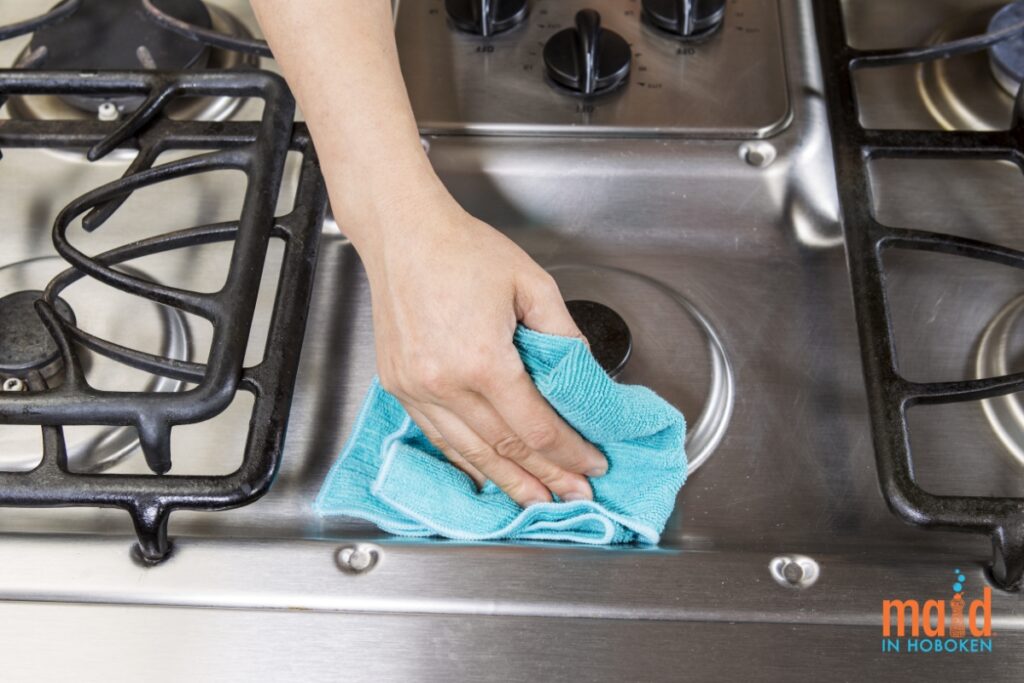
Water and dish soap
For tougher stains and grime, a few drops of dish detergent might do the trick. Generally, this method works wonders, and it could be the only thing you'll need when deep cleaning your fridge, sink, and oven surfaces.
- Add a few drops of dish soap to a bowl with warm water.
- Damp a soft cloth with the soapy water.
- Wipe the stainless steel surface by following the grain.
- Give more attention and effort to the grimy spots.
- Rinse with a damp cloth or spray plain water and wipe.
- Dry with a cloth or paper towel.
Club soda
Here's an experimental method: use club soda (sparkling water) to add some shine to your stainless steel. Many experienced cleaners recommend it. Be careful, though, because the results might vary.
You can add club soda as the last step of your cleaning process. Before you dry, spray some club soda on the surface and wipe it. After you do that, rinse with warm water and dry with another rag to finish.
The best potent cleaners and methods:
Sometimes, stainless steel surfaces require more powerful cleaning solutions and techniques. The following methods will help you on a deep cleaning session, maybe bi-weekly or monthly.
Vinegar and water
Many people ask: does vinegar damage stainless steel? And the truth is that any kind of powerful cleaner can spoil the surface if it's not properly rinsed after use. However, white vinegar and apple cider vinegar aren’t close to being the more potent ones, so you likely be alright.
If you are still doubting, you can make a milder cleaning solution by diluting vinegar with water. Also, remember to spot-test!
- Make your cleaning solution: pour pure, white vinegar into a spray bottle or make a half water, half vinegar mix.
- Mist the stainless steel with the cleaning solution. For difficult stains, let the solution rest over the surface for 10 to 20 seconds.
- Wipe the surface with a soft cloth, applying elbow grease to greasy spots.
- Rinse properly by spraying plain water or wiping with a wet cloth.
- Dry with a soft cloth or lint-free rag.
Baking soda paste
This baking soda method is another experiment you’ll want to try out if you’re feeling bold—and a little desperate. The technique is messy, and we don’t recommend it for the fridge or oven.
Use baking soda paste to clean your sink or pots (it could be very effective in eliminating food scraps and grease smudges).
- Make the paste: mix two parts of baking soda with one part of water. If your mix is soupy, add more baking soda to make it more solid.
- Spread the mixture on the stainless steel surface and let it sit for 10 to 15 minutes. You don’t have to cover the whole surface; start with the stained parts.
- With a damp cloth, wipe the mix until it dissolves.
- Rinse with another wet cloth, or spray water.
- Dry appropriately with a soft rag or paper towel.
Rubbing alcohol
Sometimes, oily fingerprints and greasy stains are too stubborn to remove. If vinegar, baking soda, and soapy water aren't enough to do the job, you can try rubbing alcohol. Just drop a little alcohol on your cloth and start wiping.
If those nasty stains don't dissolve, then maybe you have to invest in commercial stainless steel cleaners.
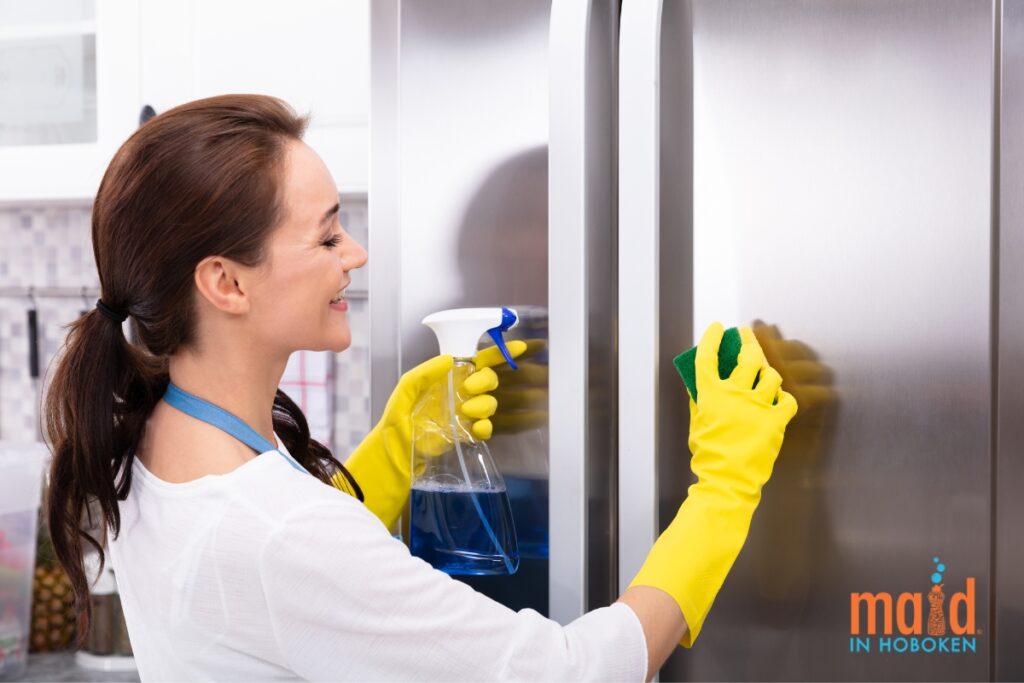
Windex
Can you use Windex on your stainless steel appliances? Using Windex or any other commercial glass cleaner could damage your surfaces. However, if you opt for an ammonia-free Windex version, maybe you’re safe. Some people recommend it because it’s convenient and effective, but always spot-test it first.
Olive oil
As with club soda, olive oils, mineral oils, and baby oils can add extra shine to your stainless steel appliance. Use it as a last step for the other cleaning methods.
However, adding oil to your stainless steel surfaces might be counterproductive if your home is dirty. The oily surfaces can attract dust particles floating in the air, and you will end up with a dusty coat over your appliances. So, be mindful of this while applying olive oil.
Avoid these cleaners and tools:
What should you not use on stainless steel surfaces? Basically, any harsh chemical like bleach or ammonia can damage your surfaces. Most stainless steel appliances can be very delicate in this aspect.
Also, avoid using steel wool or abrasive sponges because they will leave small particles over your appliances, which eventually will rust—not to mention the possible scratches!
Hire a cleaning professional in Hoboken, NJ
Ultimately, if you want your stainless steel appliances to be spotless, you need to have the time to clean. And the patience and technique to obtain your expected results! However, did you know there are professional cleaners in Hoboken and surrounding areas that can help you with these household chores and more?We are Maid in Hoboken, and we offer house cleaning services to homeowners like you — also we know how to clean stainless steel appliances. Check our services here, and if you’re interested, you can ask for a quote in just seconds.


